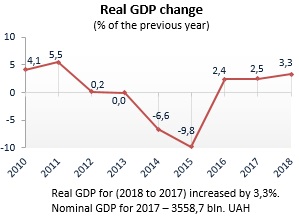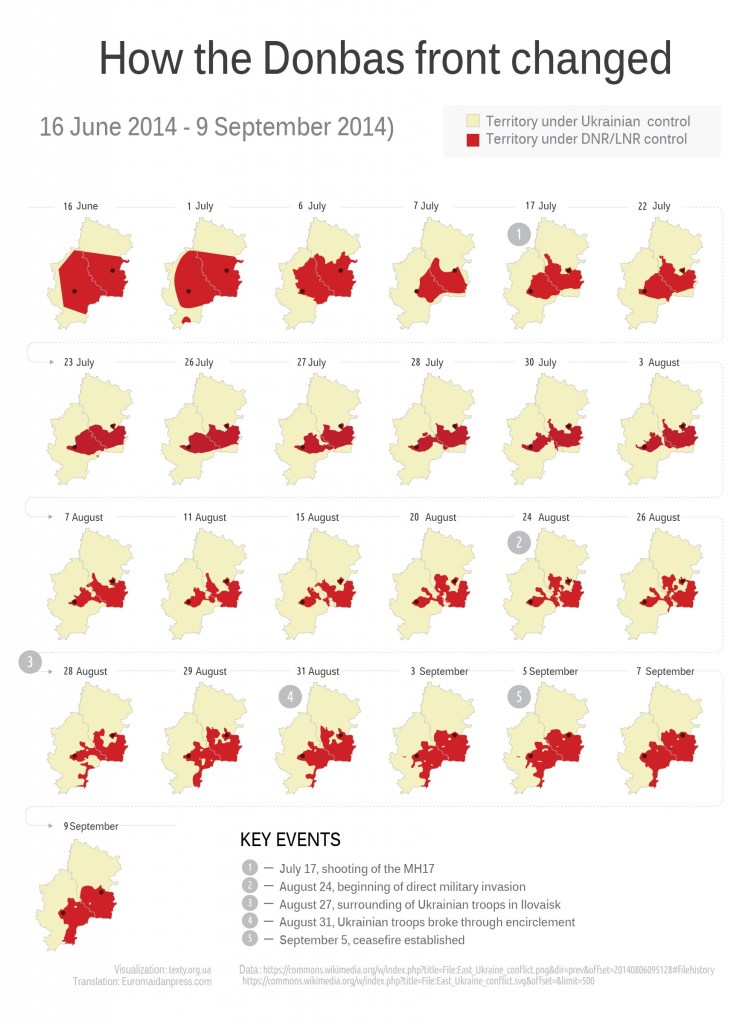Army capable of fighting, well-equipped, skilled, and experienced
The corruption in the state defense industry scandalously exposed by the Bihus.info journalist investigation served a devastating blow to all the anti-corruption and military programs of the last five years. Nonetheless, the investigation itself is not yet properly investigated by law enforcement agencies and doesn’t point directly to Poroshenko who himself has donated 700 mn UAH for the army, in particular, for the installation of anti-aircraft warfare around Kyiv. The important thing is that, despite scandals in some 130 state defense enterprises, modernization of the Ukrainian army has been both rapid and successful over the last five years.
In 2014, there was no modern individual equipment for soldiers, no adequate system of nutrition, no construction of new study centers and military accommodation. There was no professional training where soldiers were taught to shoot. The troops were curtailed nearly by half during Yanukovych’s presidency (2010-2013), so Ukraine entered the de-facto war with Russia with a lack of everything, from manpower to expertise to supplies.
Despite the triple devaluation of the hryvnia in 2014, salaries of servicemen returned to the pre-2014 amount in USD in 2018 and grew in their purchasing power, with high premiums for those fighting in Donbas. The number of troops grew 150 to 205 thousand over 2014-2018.

Particularly interesting is the fact that the Ukrainian military budget has grown slightly – from $2.4 bn in 2013 to $3.2 bn in 2018. Yet, in the days of former president Viktor Yanukovych, there basically was no army, as only 5,000 combat-ready troops were available to defend Ukraine in March 2014, when Russia occupied Crimea.
Today, the Ukrainian army ranks 29 out of 136 in the Global Firepower
rating. Particularly strong is its land army belonging to the top-10 worldwide by power and number of artillery, and armored vehicles. Air power also has improved during the last five years from 158 to 260 items of aircraft. The army is rapidly moving towards NATO standards.
Finally, dozens of new modern machines, guns, and missiles were introduced in the last years, while in 2014 there was not even enough body armor. Just in the last month, the new Ukrainian missile “Vilha-M” was successfully tested. It can reach targets more than 200 km away and is critically important for the protection of the Ukrainian coast from the ships of the Russian Federation in case of a large-scale invasion. The missile program is among the priorities of Ukraine’s military development. Important items were purchased abroad such as Turkish Baykatar TB2 drones capable to strike targets from the air, or received as a part of international support for Ukraine, such as Javelin missiles provided by the USA.

Decentralization as the most successful reform
More than 3,000 objects (schools, hospitals, etc.) were built with the support of the state budget in 2014-2018. Many other items were built by communities themselves. This is more than during the previous 23 years altogether. These rapid changes were possible due to the growth of local budgets from 68bn in 2014 to 234bn in 2018 in the result of the reform. Costs in the localities are used more efficiently with less laundering.
New and renovated schools in Kyiv Oblast. Source: decentralization

Changes to the Constitution are required to finish the reform similarly to Latvian and Polish models. These amendments will allow reforming not only the first administrative level of communities but also the second level of districts. Much depends on the parliamentary elections in the October 2019 and on the will of the new parliament to adopt all required laws. If everything goes by the plan, the local elections in Autumn 2020 will complete the decentralization reform – all 100% of communities will be enlarged and decentralized as well as districts.
The Minister of Regional Development names decentralization the most successful among reforms. And he can say so for the reform gave real tangible results for millions of Ukrainians.

Judicial reform totally failed
Probably, this reform was the biggest loss of the last five years, though it was among the most demanded. Fair and uncorrupted courts were to guarantee the real power of new progressive laws and anti-corruption institutions and to give out sentences in resonant anti-corruption cases. Unfortunately, they didn’t play this role.
The judicial reform was initiated by President Poroshenko when he created the Council on the Judicial reform in 2014 to develop a strategy. Later, in 2016, President proposed laws and amendments to the Constitution that were finally accepted by the Parliament. Thus, the reform was finally implemented but criticized by civil society because of the lack of the mechanism of dismissal of corrupt judges.
Mykhailo Zhernakov and Iryna Shyba, leading experts in the sphere of Judicial reform, write that main reason for the failure of the reform is that The High Qualifications Commission of Judges, responsible for updating the judiciary body, consists of the same old judges who must be replaced during the reform process. The principle of "judges elected by judges" for such bodies formally corresponds to the recommendations of the Council of Europe. But in practice, it was catastrophic for the countries of Central and Eastern Europe, when they were undergoing a similar transformation. In order to solve this problem in Ukraine, new laws should be adopted on the procedure of the selection of the members of Supreme Council of Justice and High Qualification Commission of Judges of Ukraine – two institutions responsible for the appointment and dismissal of judges.
Corruption: transparent-ized but still unpunished
The anti-corruption agenda is discussed as the most horrible issue Ukraine faces. It often overshadows even the war. The key issue is that full transparency was introduced by the public declaration of income by officials and general openness of state institutions and data. Also, hundreds of investigations were already performed by NABU (National Anti-corruption Bureau) with cases transferred to courts. But because of weak and corrupt courts, only a few minor cases were finished and offenders sentenced. From 116 corruption cases which were passed to the courts, 44 were even not taken for consideration yet.
As a result, if previously the corruption was hidden, now it is transparent but still unpunished. This makes people feel humiliated and deceived. Probably, this fact is one of the main reasons for the high anti-rating of the incumbent president (41% wouldn’t vote for him at any circumstances according to KMIS research despite any other achievements).

To solve the problem of unpunished corruption, a special anti-corruption court was launched. It took almost a year to select judges to the court. Independent international experts were involved in banning candidates who were considered to be indecent. Finally, the president has signed the decree on the creation of the court and start of its work just before the second tour of elections, on 11 April.
The only positive story about anti-corruption efforts, except for transparency, is the “Prozorro” system for tender purchases. The system, not people, defines from whom to purchase certain goods according to the price. UAH 75bn (2/3 of the annual defense budget of Ukraine) were already saved by Prozorro system. Ukraine has climbed up a bit in the Corruption Perceptions Index. However, the court system requires a new start.

What about the economy
Sadly, but the mantra about high prices and poor Ukrainians was actively exploited by populists and media at these elections. Judging by Facebook comments about elections, a tremendous number of people are complaining that they are becoming poorer and want “improvements right now.” Such complaints and economical extremism may play a bad joke with Ukrainians who don’t want to recognize that today, despite the war, they live better than at any time since the independence of Ukraine. This is illustrated by the diagram below.

The rise in domestic salaries, however, doesn’t guarantee the global competitiveness of the country which requires much faster GDP growth than the 3.3% of the last year. Nonetheless, after the sharp downturn in 2014 and 2015 because of the war, the current revival of the economy is quite a success.

No information policy
The popular complaints about the economy which run contrary to the real situation serve as an excellent illustration to the absence of an effective informational policy. Even while writing this article, I had to spend a lot of time to find reliable information about the real changes in the country with data and examples. This is what Petro Poroshenko has publicly recognized as a failure after the first round of elections. Similarly, a distorted image of the country’s successes was also among the reasons for Brexit, according to Karol
Cadwallader, a journalist from The Guardian.
What is more, not only were the achievements of Ukraine almost entirely absent from the media agenda, but nothing was done to counter the Russian and oligarchic propaganda. No sanctions were imposed on Medvedchuk’s 112 channel which is openly pro-Russian. Medvedchuk has Vladimir Putin as the godfather for his daughter and is a Ukrainian pro-Russian oligarch. Oligarchic TV channels which criticized Ukrainian reforms and aired journalistic investigations revealing corruption did not answer either for their manipulative material or dissemination of fakes.
The only effective measure which had a strong impact was the ban of the Russian social network VKontakte.
Last but not least – five more positive changes
1. The ongoing limited war with soldiers being killed almost every day is terrible. However, it could be much worse. In the end of May 2014, when the vote in Ukrainian presidential elections was ongoing, Russia-backed separatists had nearly taken the entire Donetsk and Luhansk oblasts under control with the active support of Russian weapons and paramilitaries. In July and August, Ukrainian armed forces started an offensive operation to close the border with Russia and round up separatist troops. They had almost succeeded when Russian armed forces openly interfered and finally led to the current situation of frozen conflict. Nonetheless, due to this brave offensive, not entire Donbas is occupied.

2. The cultural revival in Ukraine after the Euromaidan revolution was unprecedented. And it’s not only about the decree of Ukrainian Orthodox Church Independence issued by the Constantinople Patriarch or decommunization policy. As Oksana Zabuzhko, a Ukrainian modern writer, told in her interview, “for the first time, I can be proud while telling somebody abroad that I’m from Ukraine.”
- Read also: Oksana Zabuzhko: Ukraine is at the forefront of a huge world battle that will transform humanity
The Ukrainian film industry has woken up. 20 films were released only in 2019. One of the most impressive films remains “Kiborgy” about the defenders of Donetsk airport
Trailer:
3. A boom of cheap flights from Ukraine to Europe, prompted by the visa-free regime Ukraine obtained with the EU in 2017, along with zero flights to Russia is a clear indicator of the direction taken by the country.
4. A large scale construction of roads was launched by the program of prime-minister Groysman. In 2016 – 900 km, 2017 – 2100 km, 2018 – 3500 kilometers were built. Altogether, 6500 kilometers of roads underwent complete reconstruction in the last three years.

5. Tremendous international support achieved thanks to diplomatic efforts helped to counter Russian aggression. Lethal aid was particularly important. During these five years, Ukraine received US$2.5bn worth of support from the USA, €1.25bn support from the EU, US$0.15 bn from Canada, and US$0.15bn from Japan..
The key task for authorities elected this year should be the judicial reform as well as maintaining the pace in the last steps of other reforms.

